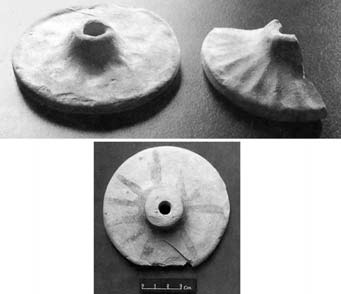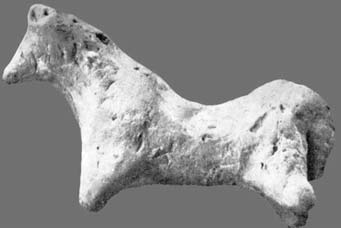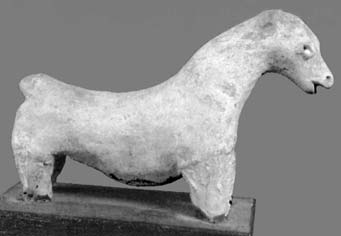Copernicus
Industrial Strength Linguist
I very deliberately did not answer your question, because, as I tried to explain to you, it was the wrong question. Technically, the PIE word does not begin with a sound, but with a symbol that represents a sound correspondence across a cognate set. The choice of the symbol can be controversial, because there are different arguments over what the original sound was, but the symbol chosen represents the one that scholars have felt to be most likely to represent the original sound. The result has been a reconstructed phonemic system that looks really implausible to most linguists. It is just a table of suggested phonetic symbols. More plausible systems have been proposed, but those have no bearing on the real question here, which is not about pronunciation but vocabulary-based cultural concepts. Whether or not the original initial vowel in "horse" was [a] or [e] does little to tell you whether it corresponds to the Sanskrit short vowel /a/. The reconstructed form for "horse" in Proto-Indo-Iranian is represented as *aćva, because the majority of daughter languages start with that vowel, not just Vedic Sanskrit. However, there is the Kurdish cognate in the cognate set for "horse": hesp/esp/asp (See Proto-Iranian language - Wikipedia). Note that a "majority rule" principle for selecting symbols is not necessarily an accurate method of deciding what the original protoform was. Sometimes, we use our knowledge of how phonology changes in order to posit a more plausible form, but that is for more advanced discussion. What is important here is that a reconstructed phoneme symbol can be misleading vis a vis actual historical pronunciation. The reconstructed PIE word for the nominative case of "horse" is *h₁éḱwos.You did not answer my question though, in the example I gave of horse, why is the PIE word beginning with an 'e' sound and not an 'a' sound. You see this is important, because it on this basis that a distance is created between India and PIE. If the original language had an 'e' sound for horse, than does it not preclude Sanskrit?
The answer is absolutely not. Sanskrit was a literary/liturgical language that brahmin priests tried to preserve. It may have been important in public speaking and other forms of scholarly activity, perhaps even a trade language. The spoken languages (Prakrits) were related forms of speech (call them "dialects") that evolved somewhat separately from each other and were contemporaneous with Sanskrit. Modern Hindi and Urdu evolved from a spoken Prakrit, not literary Sanskrit. Similarly, modern Romance languages evolved out of spoken venacular Latin in different parts of the empire, not the classical Latin spoken by Cicero. The vocabulary and pronunciation was affected by conditions in those different geographical regions. So proto-Indic would look something like Vedic Sanskrit but actually have a somewhat different phonemic system, grammar, and vocabulary that would be based on comparing it with the oldest versions of the various Indian-Aryan "prakrits". And believe me when I tell you that there are a lot of them.I am really confused now. You are saying that no language has descended from Sanskrit? Isn't practically 80% of all modern Indian languages descended from Sanskrit? Hindi, Gujurati, Bengali etc? Or are you saying they have descended from prakrits? Isn't that just vulgarised Sanskrit, like Pali, Ardhamagadhi? I am asking this as a question.
OK, but, with all due respect, "OIT theorists" are not linguists with informed knowledge of how to describe languages or how language change works. So they are prone to jump to rather naive conclusions. And please drop this talk about the Balto-Slavic language Lithuanian. It has a lot of interesting features, but it is a really superficial claim to say that it is closer to PIE than other modern languages. It is not even an Indo-Iranian language, which Sanskrit is. All daughter languages have undergone substantial changes. Sanskrit was not an ergative language, but modern Hindi has evolved ergative traits with certain participial forms of the verb. It has postpositions where Sanskrit merely had suffixes (like Latin, Greek, and other older forms of IE languages). If you were to look at Old English (Anglo-Saxon spoken in Wessex, not the ancestor of the modern London dialect), you would find it almost impossible to understand. Languages change substantially over just a few centuries, so please beware of facile claims about how close Vedic Sanskrit was to ancestor languages spoken thousands of years earlier.OIT theorists say that Sanskrit is the original mother language of all IE languages. Our claim is Sanskrit on transit from India to Western Europe has undergone modification i.e. lost the original number of cases, declensions, genders and sounds etc Hence we find that Avestan is extremely close to Sanskrit as Persia was India's direct neighbour, and then the second most closest is Lithuanian and and the furthest is Celtic.
The correct expression is "highly implausible", not "impossible". There is nothing in the PIE vocabulary set that suggests concepts specific to the Indian subcontinent. Also, there are few plausible changes in sound correspondences that could reasonably be derivative of proto-Indic, but those arguments require substantial knowledge not just of typological universals, but a sophisticated understanding of how articulatory mechanics work. Again, you would need a much more general introduction to linguistics before you could really appreciate those arguments.Another group of OIT theorists accept PIE but they say PIE was spoken in India.
I want to know the reasons why both are impossible according to linguistics.
I am no expert in physics, and string theory sounds very intriguing to me, but I would not presume to argue with physicists over the merits of string theory. I just don't have the grasp of the technical details to do that. Similarly, I don't know enough about history to take a position on precisely why the Venetian empire collapsed. I might be able to read some internet materials on the subject and ask some interesting questions about conclusions that historians take seriously, but I wouldn't presume to challenge consensus opinions on such matters. You have summarily dismissed an entire field of study without ever having taken even an introductory course in the subject. Trying to play catch-up on the Internet is better than nothing, but it can't sustitute for a formal introduction to the subject. You don't have the requisite knowledge to label scholarly opinions as "speculation".
We don't, especially if we are unschooled in the subject matter. If you are really interested, please continue to inform yourself about it by whatever means is available to you, including web pages. Just be careful not to believe everything you read, especially when it is published on web sites published by those with a political axe to grind.So really effectively it is just guessing. Okay, all I am saying is how you arrive at a theory is irrelevant. You could have got it in a dream or given it by aliens --- but it has to be tested. How do we know that PIE as it has been reconstructed is correct?
I would rather you phrased the question more accurately as "How can you be sure that...?" Nobody is claiming absolute knowledge of the facts here. Estimates of dates are always within a range, because we have no written records. Some of those dates are informed by archaeological data. Some by how likely it is for daughter languages to diverge from a mother language over time. If you just look at how radically languages deviate over time, basing this on recorded history, we see sound correspondences that prove genetic relationships over a few millennia. Beyond that, the changes would probably become too radical to establish proof of genetic origins. That is why we can establish a large number of language families around the world, given records from recorded history and from linguistic research on language families around the world. However, we run into extreme difficulties in trying to prove relationships between large language families such as Indo-European (the best-studied language family) and Altaic or Turkic. I think that we can now establish a relationship between Altaic languages such as Turkish and, say, Korean and Japanese. However, such arguments are fairly complex and sophisticated. They go beyond mere reliance on sound correspondences across cognate sets. And that is not an area of specialization for me, so I tend to be more neutral than other linguists on the merits of the argument.@Copernicus Can I add a question, suppose that I accept there really was a migration of Indo-Aryan speaking people into India from the Steeps or wherever, how do you know the date of this event? What if the Indo-Aryan speakers were already in India in 7000BCE? What if they entered India in 10,000BCE? How do you know dates by just analysing linguistic data?



